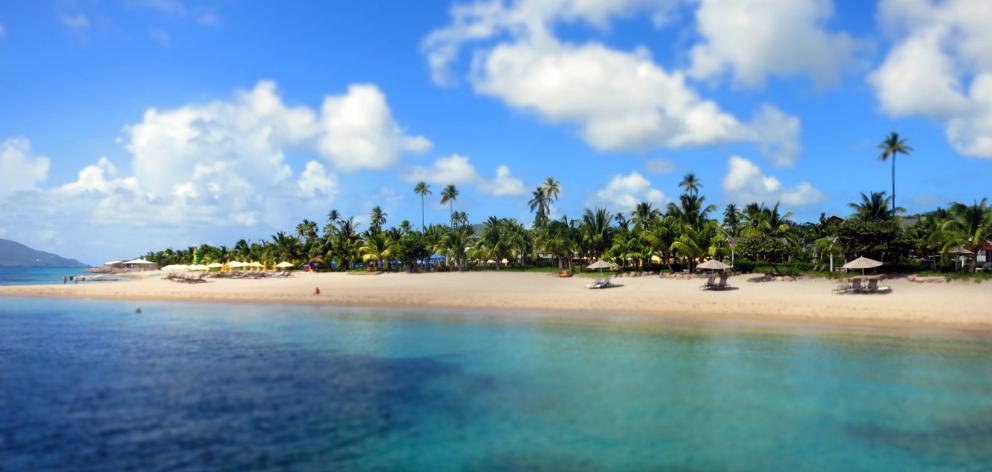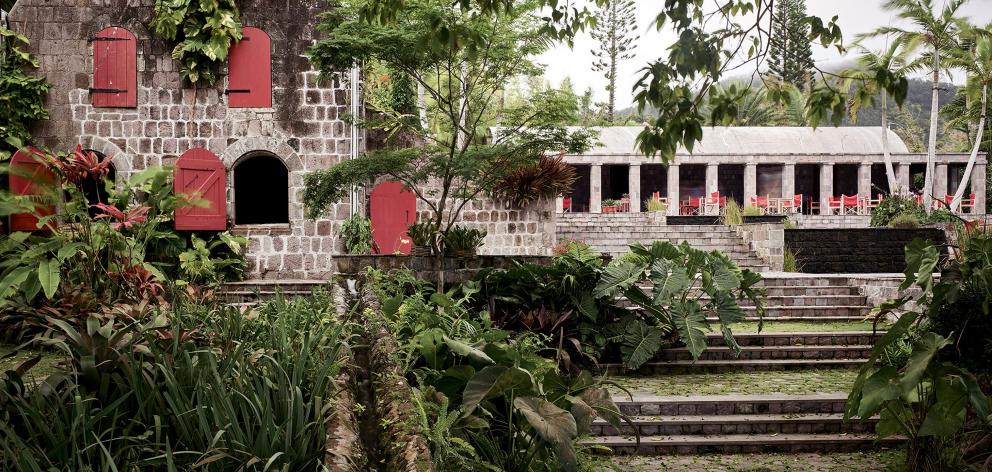
Those who have seen the play or listened to the soundtrack of Hamilton remember the opening song, whose lyrics ask, "How does the bastard son of a whore and a Scotsman, dropped in the middle of a forgotten spot in the Caribbean'' grow up to be ... well, Alexander Hamilton?
I don't know, but I do know the forgotten spot in the Caribbean is Nevis, located in the northern part of the Caribbean's Lesser Antilles archipelago, just southeast of Puerto Rico and west of Antigua.
It was here that the boy with the inauspicious beginning who grew up to be one of the founding fathers of the United States and central figure of a blockbuster musical was born and lived for most of his childhood.
Still, don't go to Nevis expecting to stock up on tacky souvenirs of its most famous son. There is a noticeable scarcity of anything remotely designed to cash in on the phenomenon. Ironically, even the museum chronicling the life of the man on the American $10 bill charges only $5 for admission.
This lack of pretension is uniquely Nevisian, and what you might expect from a 93sq km dot in the ocean noted not for what it has as much as for what it doesn't have - cruise ships cramming the port, duty-free shopping malls, sprawling all-inclusive resorts or even stoplights (not a single one on the island). Nevis has a population of just 12,000, and free-roaming goats and green vervet monkeys outnumber tourists. Unlike on Aruba, Barbados and St Thomas, a nightlife tour here probably means accompanying a flashlight-wielding naturalist into the rainforest while he/she points out nocturnal bats, frogs and bugs.
If Nevis had a national motto, it would be "Go ahead and rush ... but please do it slowly''. Situated 3.2km from the neighbouring island of St Kitts, with which it shares nation status, Nevis lays claim to being the most laid-back spot in the Caribbean. Just ask any of the happily buzzed patrons occupying stools at Sunshine's, a beach bar at the end of a rutted road whose potholes could be classified as craters. The buzz comes from the signature drink - the Killer Bee. Its pedigree is a mystery, as the bar's owner refuses to give up the recipe, but suffice to say, it might be considered a rum punch on steroids.

That life starts with the beaches. While they lack the sugar-white sand of Anguilla and the Turks and Caicos, Nevis' beaches each possess their own character and charm. The most celebrated, Pinney's Beach, a seemingly endless stretch, is composed of fine grey volcanic sand. Coconut palms border the sea, giving it the feel of a paradise lost, disconnected from the rest of the world by the dimensions of space and time.
But Pinney's isn't the island's only glorious beach. There's Oualie, an excellent spot for snorkelling; Newcastle, surrounded by a typical Nevisian fishing village; Windward, another spot where fishermen moor their boats; and the beach of Nisbet Plantation, with its coral reef just offshore.
The beach here is linked to Nisbet's former Great House (circa 1778), now a four-star hotel, by a splendid avenue of sheltered palms. Nisbet is but one of the island's accommodations that have been fashioned from former sugar plantations. The industry thrived in the 18th and 19th centuries and some 100 plantations made Nevis one of Great Britain's richest colonies.
A taste of this early colonial lifestyle can be had by visiting Nisbet or its sister plantation great houses (also hotels) Montpelier and the Hermitage. The latter two - located not on the beach but against the green backdrop of the mountains - are especially picturesque. Stand on the veranda with a cool lemonade in hand and gaze at the lush landscape surrounding you and the shimmering sea far below. While the temptation on Nevis is to do a whole lot of nothing (those beaches are blessedly uncrowded), if you do want something more strenuous than turning over every 30 minutes to ensure an even tan, there is a world-class hike to the top of Nevis Peak, a dormant volcano.
At 985m, it doesn't exactly rank in the category of Nepal's Mt Everest or Alaska's Mt Denali, but its diminutive stature is deceptive. Getting to the top takes several hours of shinnying up rugged cliffs and meandering through foliage so dense as to seem impenetrable in places. (If you want to cheat, there's a guide rope to help you along.) Once at the top, your reward - besides the fact that you are still breathing - is a panoramic 360-degree view of the islands of St Kitts and Montserrat. Just hope for a clear day, though, as fluffy white clouds often descend on the mountaintop, obscuring the view.

You won't find any snow here, but the hike back down from the peak will take you through a dense rainforest with a number of waterfalls plunging into quiet streams.
Back on level ground, a visit to the tiny capital, Charlestown, is in order. In the early 17th century, after the British wrested control from the Spanish (who before them had wrested it from the original inhabitants, the Sibonay, Arawak and Carib Indians), they set about building the town, which today resembles a miniature gingerbread village.
Pastel-hued cottages house shops that display a surprising array of quality local crafts - Lime in the Coconut, Island Living and the Charlestown Gallery are just a few.
Charlestown also boasts museums with connections to two giants on the world stage. The grey stone building on the waterfront is now a museum dedicated to the aforementioned Alexander Hamilton.
Lesser known - perhaps because they have yet to do a musical about him - is the fact that British Admiral Horatio Nelson, victor over Napoleon at the Battle of Trafalgar, also had a history on the island. He lived here in wedded bliss with Nevisian beauty Fanny Nisbett before his scandalous liaison with Lady Emma Hamilton (no relation to Alexander).
You can visit the Fig Tree Anglican Church and see Nelson's and Fanny's marriage certificate, and then head to the Nelson Museum, which has a collection of memorabilia on the admiral.
Interesting historical note: Nelson was first dispatched to Nevis to enforce the British Navigation Acts, designed to prevent England's current colony - Nevis - from trading with its former colony - America.
Despite its miniscule size, there's plenty to see and do on Nevis. Just remember one thing: "Go ahead and rush ... but do it slowly''. - TNS
Patti Nickell is a Kentucky-based travel and food writer.












